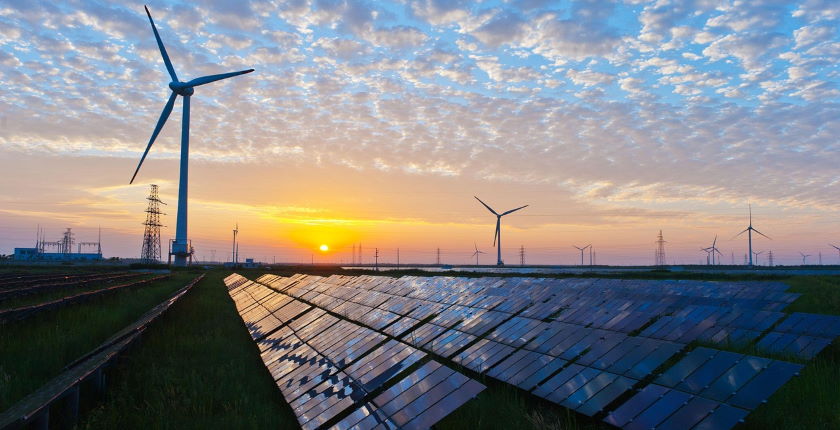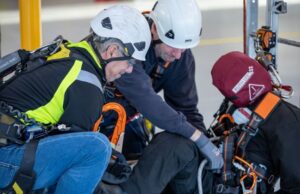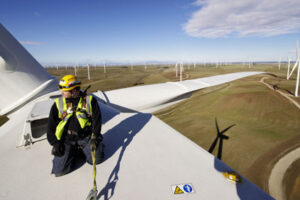As the renewable energy sector expands at record speed, the lines between different clean energy disciplines are beginning to blur. Wind and solar energy, once siloed industries, are now frequently integrated across large-scale energy projects and hybrid developments. This convergence has created a new challenge — and opportunity — for the workforce: cross-training.
At STL USA, we believe that preparing technicians to work confidently across both wind and solar environments isn’t just a smart workforce development strategy — it’s a critical step toward creating a more resilient, efficient, and future-ready clean energy workforce.
Why Cross-Training Matters in Renewable Energy
The U.S. renewable energy industry is projected to generate over 500,000 new jobs by 2030, according to the U.S. Bureau of Labor Statistics. Many of these roles will span both wind and solar installations as the market shifts toward integrated energy solutions and hybrid projects.
Cross-training empowers technicians to:
1. Increase Employability
Professionals with experience in both wind and solar technologies are significantly more attractive to employers who need flexible, multi-skilled teams. Whether it’s responding to seasonal project demands or transitioning between construction and O&M phases, cross-trained staff ensure agility in deployment.
2. Boost Operational Efficiency
For employers managing diverse portfolios, having personnel who can work across technologies helps optimize scheduling, reduce downtime, and maintain continuity across projects — especially in rural or offshore locations where mobilizing crews is costly.
3. Advance Careers
Cross-training opens the door to broader career pathways, giving technicians the ability to pivot between roles or step into leadership positions that require knowledge across multiple clean energy domains.
STL USA: Pioneering Cross-Training for a Converging Industry
At STL USA, we’ve designed a suite of training programs specifically to support dual-skilled technicians. Our goal is to meet the evolving demands of the energy sector while helping workers unlock new career opportunities.
Combined GWO and Safety Training
Technicians entering the wind sector typically pursue GWO Basic Safety Training (BST), covering working at height, first aid, fire awareness, and manual handling. However, these same safety principles apply in solar environments — particularly large-scale solar farms with elevated platforms and energized equipment.
We streamline these overlapping skill sets to create an efficient, dual-purpose training experience. For example:
GWO Enhanced First Aid can benefit both wind technicians working offshore and solar techs in remote desert environments.
NFPA 70E Electrical Safety Training is crucial for personnel across both sectors due to the risks associated with live electrical systems.
By combining certifications into a single structured program, STL USA saves time, lowers costs for employers, and empowers students with a broader safety foundation.
Custom Training Pathways
Recognizing that not all technicians start from the same point, STL USA offers customizable cross-training tracks to bridge skill gaps for those transitioning between sectors. For example:
A solar technician may already have PV installation experience but lack rescue training or confined space awareness needed for wind turbines.
Conversely, a wind tech might need additional instruction in solar array layout, grounding, or module maintenance.
Our trainers work directly with employers to tailor course packages that make these transitions seamless, reducing learning curves while ensuring all regulatory requirements are met.
WindStart Program + Solar Integration
Our WindStart Program, a foundational course for new entrants into wind energy, is expanding to include solar modules, providing students with a comprehensive introduction to both major energy sectors. It’s ideal for high school graduates, career changers, or veterans looking to enter clean energy with a solid, versatile foundation.
Building a More Resilient Workforce
A workforce trained in both wind and solar can better withstand market volatility. As political and economic conditions shift — such as recent federal policy reversals on offshore wind or new tax incentives for solar — dual-trained technicians can adapt to where the work is.
This agility reduces project delays, improves safety outcomes, and keeps talent employed even when one sector faces uncertainty. In short, cross-training isn’t just good for the worker — it’s strategic for the industry.
STL USA: Your Partner in Clean Energy Workforce Development
With decades of experience and training centers strategically located across the U.S., STL USA is the trusted name in renewable energy training. Our instructors bring hands-on industry experience, and our facilities are equipped to simulate real-world scenarios across both wind and solar environments.
Why STL USA?
Custom Program Design for Employers
Advanced Rescue & Electrical Safety Training
Career Support Services
Modern Training Facilities with Industry-Relevant Tech
Whether you’re a technician looking to expand your qualifications or an employer managing a mixed-energy portfolio, STL USA has the tools, experience, and vision to prepare your teams for tomorrow’s energy challenges.
Ready to expand your skills?
Explore our training programs or contact us to build a custom cross-training pathway for your team



